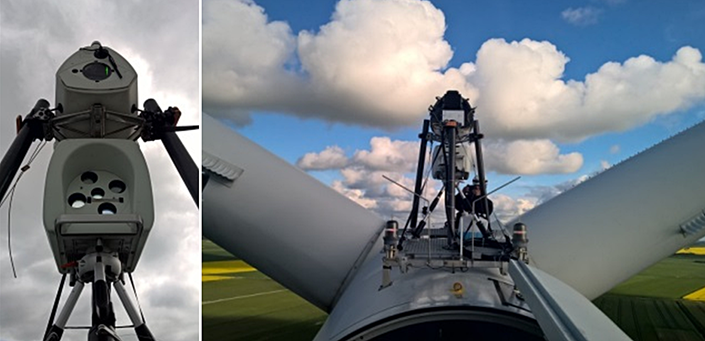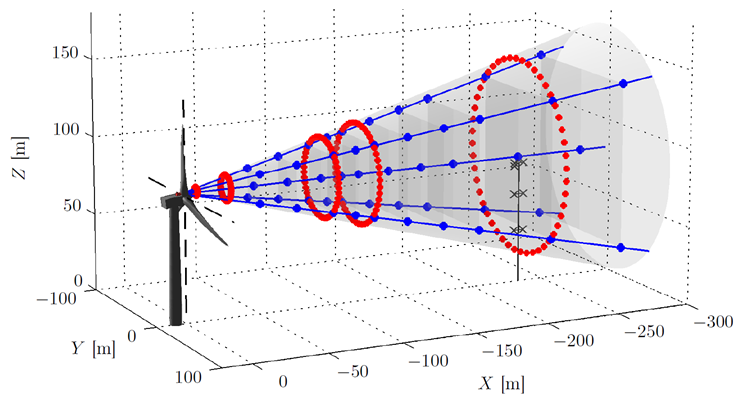Antoine Borraccino will present how nacelle lidars’ measurements can be used to reconstruct free wind parameters at the ISARS 2016 conference in Varna, Bulgaria, on 6-9 June 2016.
The presentation will be on “Wind Field Reconstruction from Nacelle-Mounted Profiling LiDaRs integrating Induction Models”.
Nacelle-mounted lidars can measure wind at several distances and heights upstream of the turbine rotor. In this study, wind parameters are reconstructed using a combined wind field and induction model. LOS velocity measurements taken at several distances, within the induction zone, provide inputs to the reconstruction algorithm.
The reconstruction algorithm minimizes the error between 10-minute averaged LOS velocity measurements and the LOS velocity estimated from the combined wind field and induction model.
Within the UniTTE project, two profiling nacelle lidars were calibrated (see here) and installed on the nacelle of a 2.3 MW Siemens turbine in 2015, in Nørrekær Enge, Denmark.

Figure 1: Measurement campaign in Nørrekær Enge (Denmark): the 5-beam Avent Demonstrator (bottom) and ZephIR Dual-Mode (top) lidars on a Siemens 2.3 MW turbine.
The 7-month measurement campaign also featured an IEC-compliant meteorology mast distant by 2.5 rotor diameter.

Figure 2: Lidar measurements trajectories and range configuration in NKE: the 5-beam Avent Demonstrator (blue) and ZephIR Dual-Mode (red)
Wind parameters reconstructed from the lidars data are compared with classic instrumentation (cup and sonic anemometers, wind vanes, etc.). Their suitability is then discussed in the context of power performance standards.
The presentation covers the following:
- An introduction to the lidars measurements, from backscattered light to estimated wind parameters, particularly in the context of power performance
- What is model-based wind field reconstruction and details on the models applied in this work
- A comparison between met. mast instrumentation and lidar reconstructed wind parameters, from measurements within the induction first and then estimated in the free wind